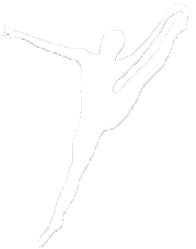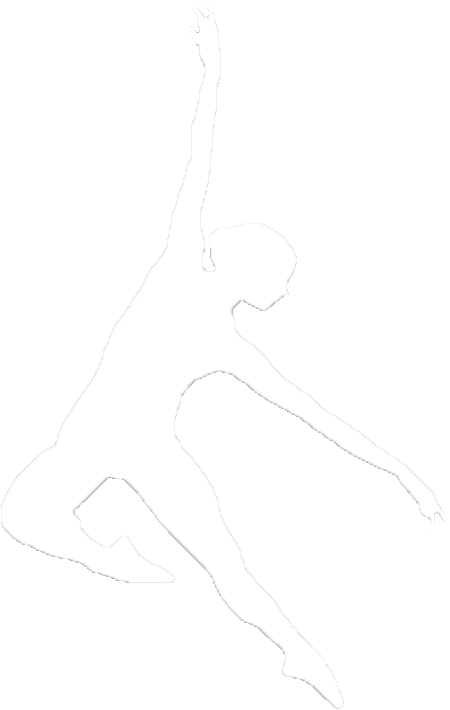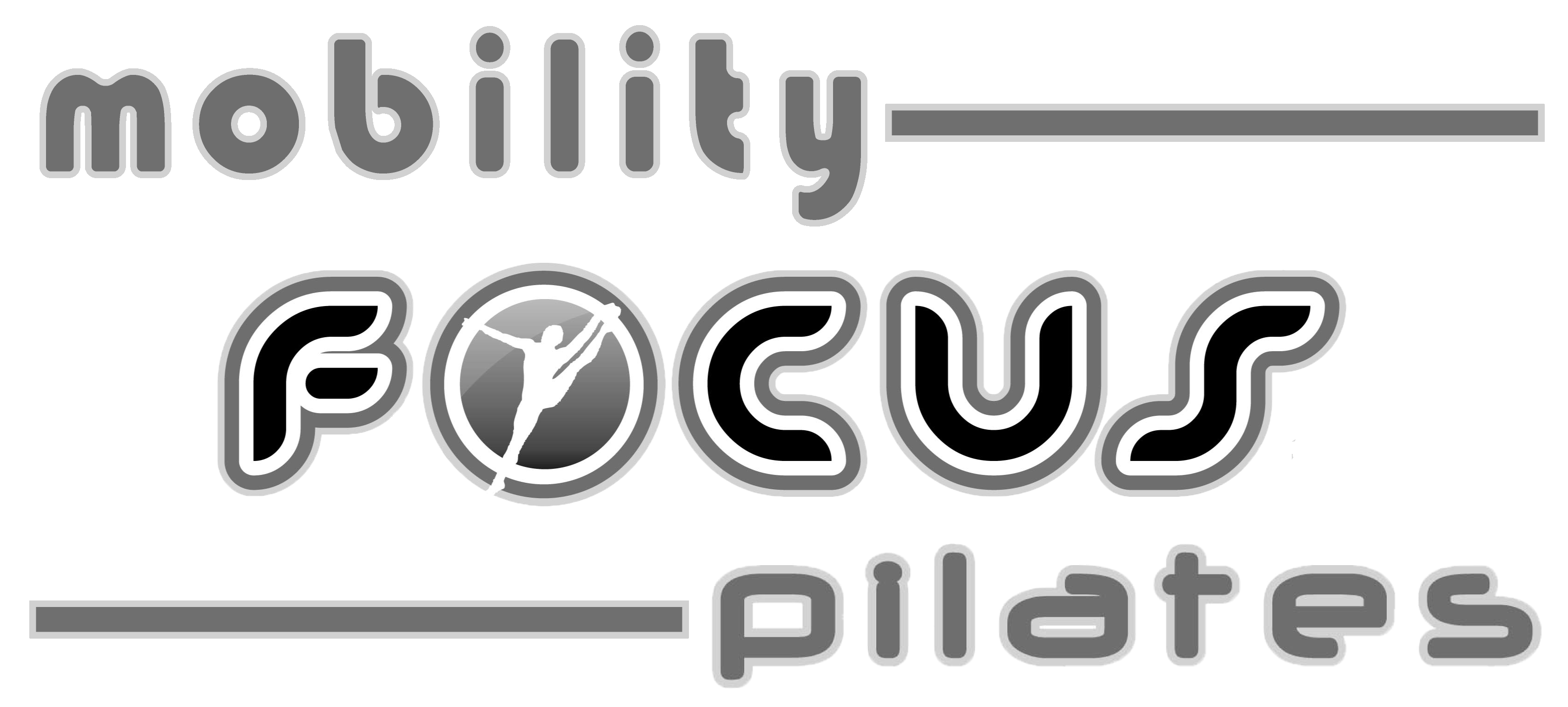



Freedom of movement
Joint care and body control for the athlete inside the artist.
As a former professional dancer, Kimberly Spencer knows the value of having a program that not only keeps dancers healthy and feeling better, but should also help improve their technique, safely increase ranges and develop strength to help dancers communicate freely with their body.
Now, the injury prevention tool and performance enhancing system used for years by professional sports and collegiate teams, can and should be in the hands of every dance student and professional. This mat-based, systematic and progressive approach needs very little equipment and comes with built-in self assessment tools. Exercises are specific in purpose and intentionally step out of the dancer's set patterns to build towards body mastery.
Taught by mobility specialist, Pilates trainer and former professional dancer, Kimberly Spencer, Kinstretch® with Kim Dance Conditioning is a joint mobility training program using the Functional Range Conditioning System ® (FRC) and tailored to the dancer's specific needs. The varying courses and specific workshops give students and professional dancers the tools, skills, knowledge and techniques to sustain a lifelong dedication to their art and movement. Classes can be structured to specific age groups, but are all based on physiology, movement science and research, strength conditioning and how the health and function of each joint contributes to the success of the dancer as a whole:
-
Address imbalances from training - spine to feet
-
Identify joint weaknesses
-
Safely increase ranges with the control to use new flexibility
-
Deconstruct joint health for dancers
-
Optimize joints = optimizing performance
-
Reduce overstretching
-
Strengthen body control
-
Minimize or prep against injuries
-
Daily self assessments to prepare for the day
Much research* has shown the rigors of dance training, especially among adolescents, often leads to many overuse injuries. Most are associated with joints that lack stability (especially the knees), ranges lacking but are required for skills and technique (such as turnout and footwork), and extreme loads of repetitive movements, without the strength to tolerate all these needs. Even among the most attentive of teachers and dance programs. Joint mobility training addresses all these areas and, taught from the experience of a dancer, can demonstrate how these concepts directly effect dance technique and skills.
Classes and workshops are available online or onsite of studio/facility.

Every dancer always wants more. Always desiring and demanding more of something in their body to move better, but also to have less injuries and time away from dancing. Here's a system that gives both.


Master Class Workshop Sample
Courses can be taught:
Online - Live/Pre-recorded
Onsite
Workshop Format
8-week Progressive Course
A single workshop format is a condensed class that briefly covers the joints that are self assessed and trained in-depth during an eight (8) week course.
Every class and set of courses can/should be systematically progressed to:
1. Control ranges
2. increase and improve ranges
3. strengthen all ranges
4. improve strength with movement, speed and power.
Strategies covered:
-
Daily self assessing movements
-
Improve body control and abilities to move (especially rotate) at end ranges
-
Increase end ranges as applicable
-
Strengthen ability to produce strength and absorb force at end ranges
Classes typically finish with a movement challenge that approaches familiar dance skills or movements patterns, or problems solve dance/dancer specific issues - and addresses these from the perspective of body control and joint strength.
*The above sample class was taught to online to Dance Dept students at the California University of Long Beach in 2021. CLICK HERE for student feedback!
Fly High and Land Safely
Courses can be taught:
Online - Live/Pre-recorded
Onsite
Workshop Format
8-week Progressive Course
Better height, good ballone and softly absorbing landings are dependent on multiple joints working well independently and inter-dependently together, in order to distribute the production and absorption of these forces in the body.
Participants experience how to assess and maintain the necessary joint health, function, ranges and strength at ALL ranges in every joint. Consistent practice and implementation will not only improve skill level and technique but also minimize the possibilities of injuries.
Breakthrough Stretches at Barre
Courses can be taught:
Online - Live/Pre-recorded
Onsite
Workshop Format
8-week Progressive Course
Stretches feel great and may seem to temporarily improve ranges, however there is a lot of stretch physiology and science that can be applied to make stretches not only safer but more effective.
Participants can reduce the risk of overstretching and stretch-related injuries by learning and experiencing how to stretch at longer lengths combined with motor control to physically increase flexibility with more lasting effects. Quick stretches at the barre or in dance classes can even be more effectively used to continue to strengthen body control and build strength in tissues even while stretching. "Activating" stretches doesn't change the typical dance class format however, dance teachers are welcomed!
Exceptionally Excellent Extensions
Courses can be taught:
Online - Live/Pre-recorded
Onsite
Workshop Format
8-week Progressive Course
-
Self assessment tools
-
Increasing independent hip flexibility, safely and with the control to use new ranges
-
Strengthening rotational capacities in the joint capsule
-
Developing better stability and control in the spine and pelvis (core) relative to hip extensions
These are just some of the tools, techniques and exercises that can be acquired with Dynamic Movement's mobility focused training program.
These benefits in turn will help offset imbalances from training, identify weaknesses and lack of mobility, and keep the joints in the hips and vertebrae healthy, strong and resilient as demands on them increase.
Fantastic Feet Foundation
Courses can be taught:
Online - Live/Pre-recorded
Onsite
Workshop Format
8-week Progressive Course
Foot intrinsic control and ankle mobility goes beyond just foot doming and theraband stretches and footwork. Individual toe, foot and ankle control and stability needs to be combined with loads of mobility and movement.
Work is done to not only improve ranges needed to perfect dance technique, but to also prepare the body to tolerate ranges where most "accidental" or overuse injuries occur such as from sprains, strains, tendonitis and tears.
Perfect companion as preparation for pointe work and even rehab to get back into class!
Tackling Turnout
Courses can be taught:
Online - Live/Pre-recorded
Onsite
Workshop Format
8-week Progressive Course
Identifying how to specifically increase hip mobility for turnout, means improving the joint workspace necessary to draw from to not only have better hip rotation but strength and power.
Stretching and class corrections alone will not make the tissue changes desired nor provide the motor control to use turnout well. The body needs specific input and strategies learned in this class(es), in particular for the joint capsule.
These techniques and exercises may not only decrease common overuse injuries including major ones that often require long periods offstage or surgery, but also offer more freedom to access more turnout, help prep for classes or rehearsals, and tools and knowledge to wind down and recover.
Splitsville
Courses can be taught:
Online - Live/Pre-recorded
Onsite
Workshop Format
8-week Progressive Course
Getting your splits in any direction is only half the battle!
Dancers and all high performance athletes need to train the control, strength and eventually power within all that flexibility in order to be able to safely use and have strength and power in those splits!
If more flexibility is needed, individuals learn to not only safely increase ranges but develop the control to keep and use these ranges, AT THE SAME TIME! Not only is this more efficient use of time, but also prepares the dancer for the demands using splits, from kicks to jete's. Classes allow dancers to still focus on their needs, so if flexibility isn't needed exercises given will address strength, control, power, or even having pain-free ranges.
More Coming Soon!
Courses can be taught:
Online - Live/Pre-recorded
Onsite
Workshop Format
8-week Progressive Course
Are there something specific demands your dancers or studio needs?
Do you have specific movements, injuries or areas of the body you would like a course or workshop to focus on?
More online courses and onsite classes and workshops are coming so be sure to let us know if there's a specific need you would like to see fulfilled!
Interested in the research? Here's some great articles and research:
The Relationship Between Range of Motion and Injuries in Adolescent Dancers and Sportspersons: A Systematic Review | Storm, Joyce M et al. Frontiers in psychology vol. 9 287. 22 Mar. 2018 | 2018 Jun | https://www.ncbi.nlm.nih.gov/pmc/articles/PMC5874564/ |
Injury Incidence, Dance Exposure and the Use of the Movement Competency Screen... | Lee, Linda et al. International journal of sports physical therapy vol. 12,3 (2017): 352-370. | 2017 Jun | https://www.ncbi.nlm.nih.gov/pmc/articles/PMC5455185/ |
Injuries in Female Dancers Ages 8 to 16 Years | Steinberg, Nili et al. Journal of athletic training vol. 48,1 (2013) | 2013 Jan-Feb | https://www.ncbi.nlm.nih.gov/pmc/articles/PMC3554026/ |
Preventing Dance Injuries | Russell, Jeffrey A. Open access journal of sports medicine vol. 4 199-210. 30 Sep. 2013 | 2013 Apr | https://www.ncbi.nlm.nih.gov/pmc/articles/PMC3871955/?log$=activity |







